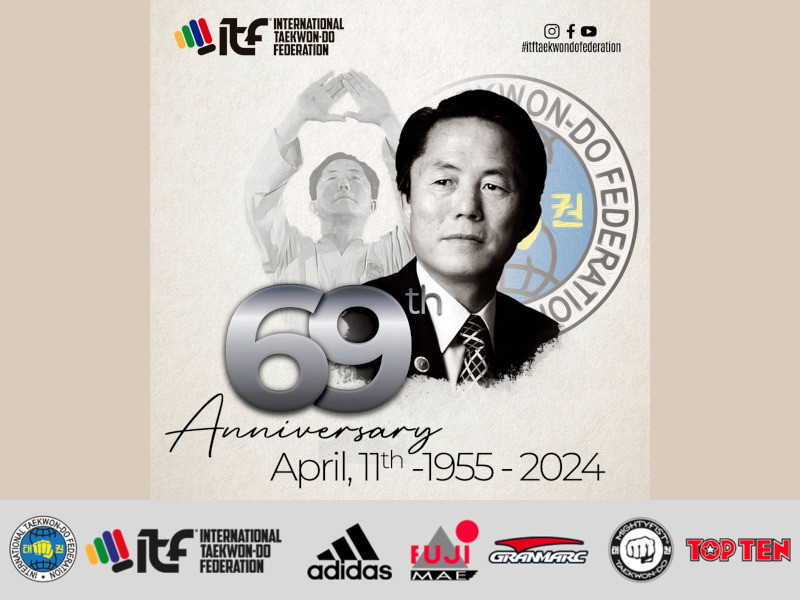The history of Taekwon-Do must be told from November 9, 1918, when Choi Hong Hi was born in Hwa Dae, in the Myong Chun district on the Korean peninsula. Of fragile health and strong temperament, at the age of 15 he began studying calligraphy and Taekkyon, an ancient Korean discipline that includes numerous foot techniques and open hand arm movements.
At the age of 19 he continued his academic training in Japan where he began practicing Shotokan Karate from which he graduated from II dan. The end of World War II in Asia meant the rise of a movement that sought to restore pride to a country devastated socially, culturally, politically and economically.
The military aspect was no exception to the state of affairs and in January 1946, he received the rank of second lieutenant in the newly created armed forces of the Republic of Korea and immediately understood that he must develop a national martial art. Since March of that same year, together with his closest collaborators, he began to create new techniques systematically until after a few years, it became necessary to name this new martial art. In this way, the meetings of the “Name Selecting Committee”, made up of high-ranking martial arts instructors, historians and prominent figures in society, followed one after another.
After many obstacles and overcoming fierce opposition, finally on April 11, 1955, the name Taekwon-Do was established for this new martial art. In 2024, 69 years later, the International Taekwon-Do Federation and countless athletes around the globe commemorate the first appearance of Taekwon-Do.
Grand Master Paul Weiler, ITF President, commented the importance of that date: “Remembering the birth of a global sport like Taekwon-Do with millions of athletes has more than just idealistic significance – it moves us to our very core.”
As a motivation for selecting the name Taekwon-Do, it has been passed down that literally “Tae, represents the action of jumping, hitting or breaking with the foot; Kwon represents the fist, but not only the clenched hand, but also other movements such as hitting and pushing. Finally, Do, means art or path, the correct way built and established by the Saints and wise of the past. “


 Sbn Huang Jia’s farewell
Sbn Huang Jia’s farewell














